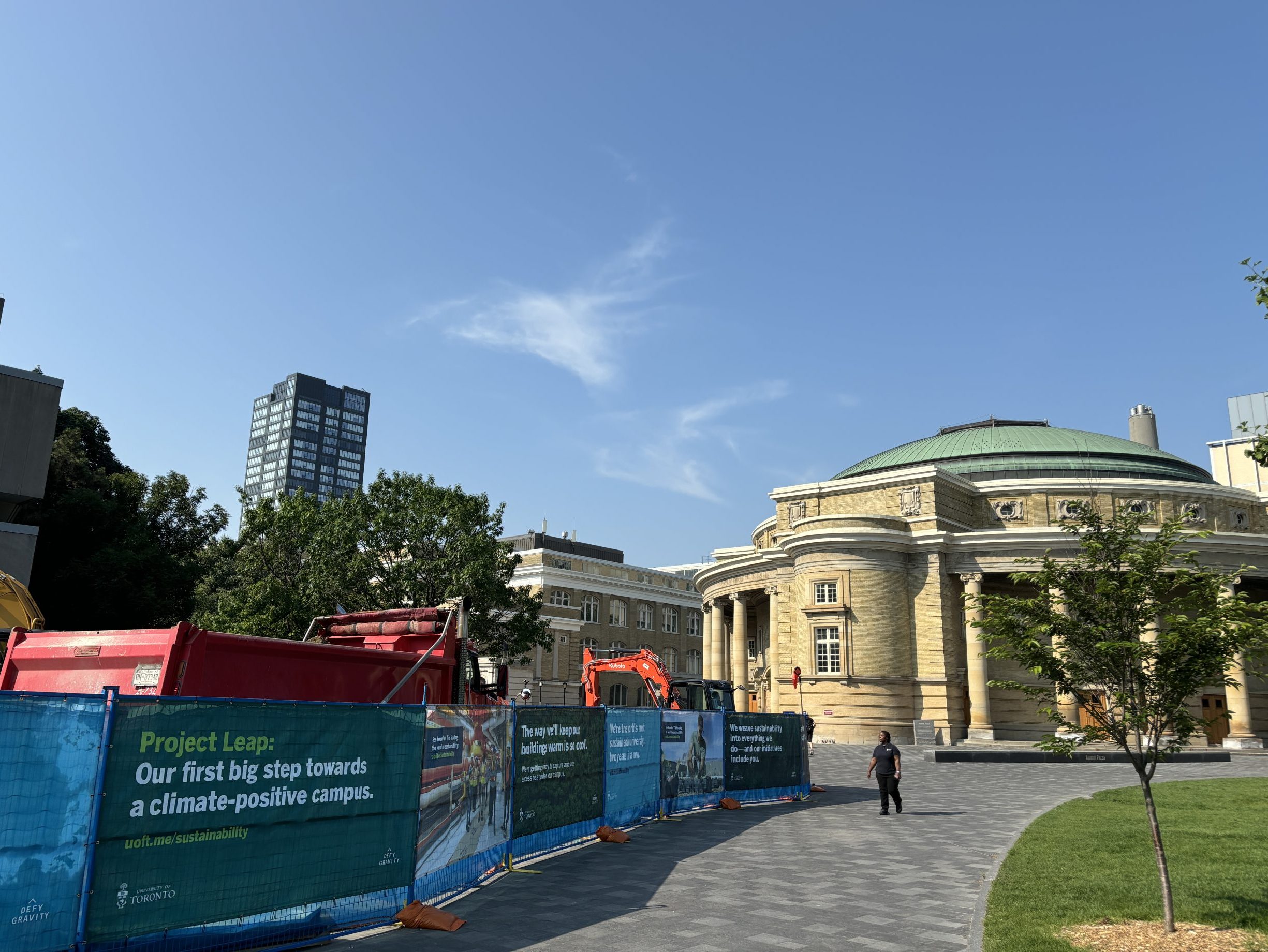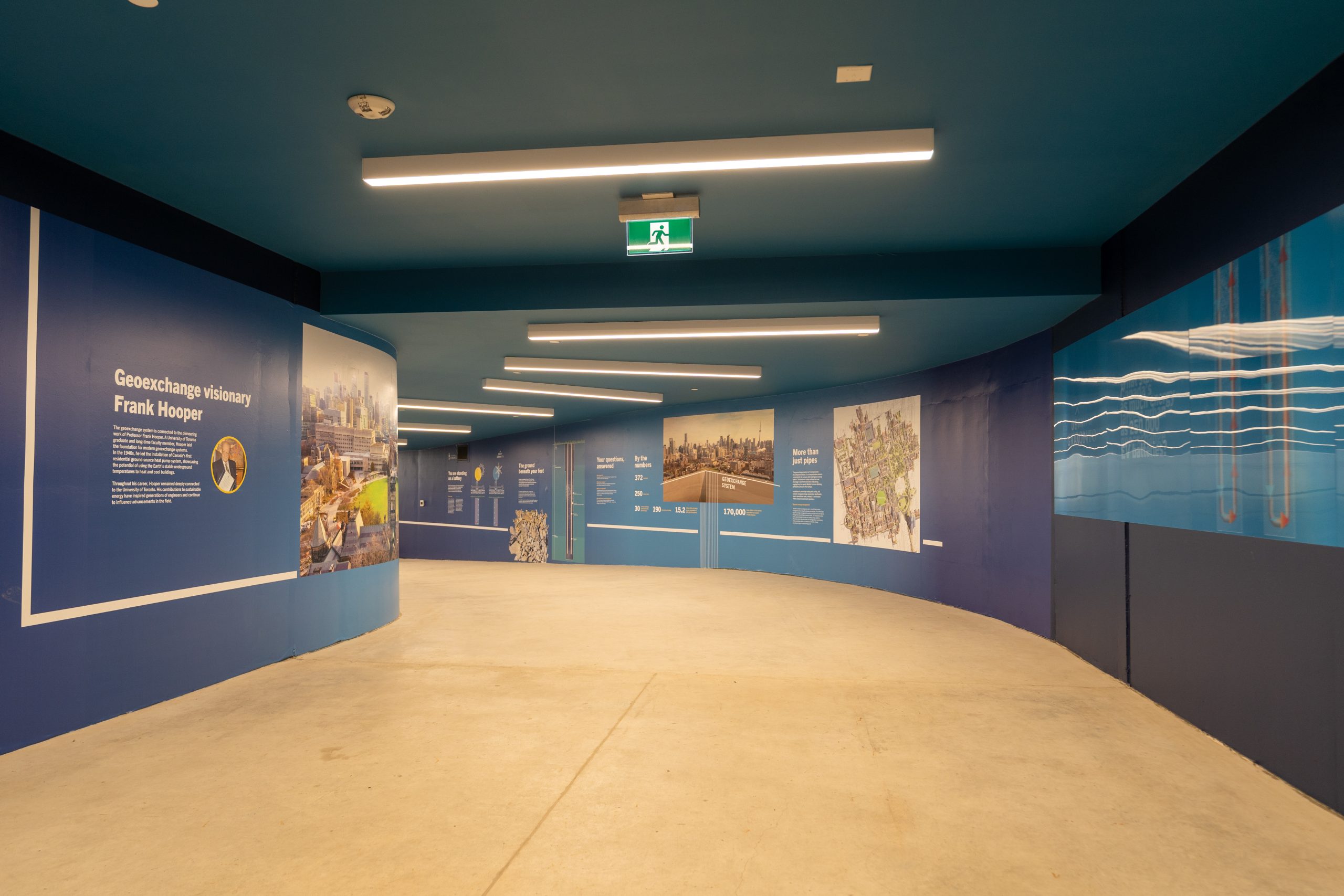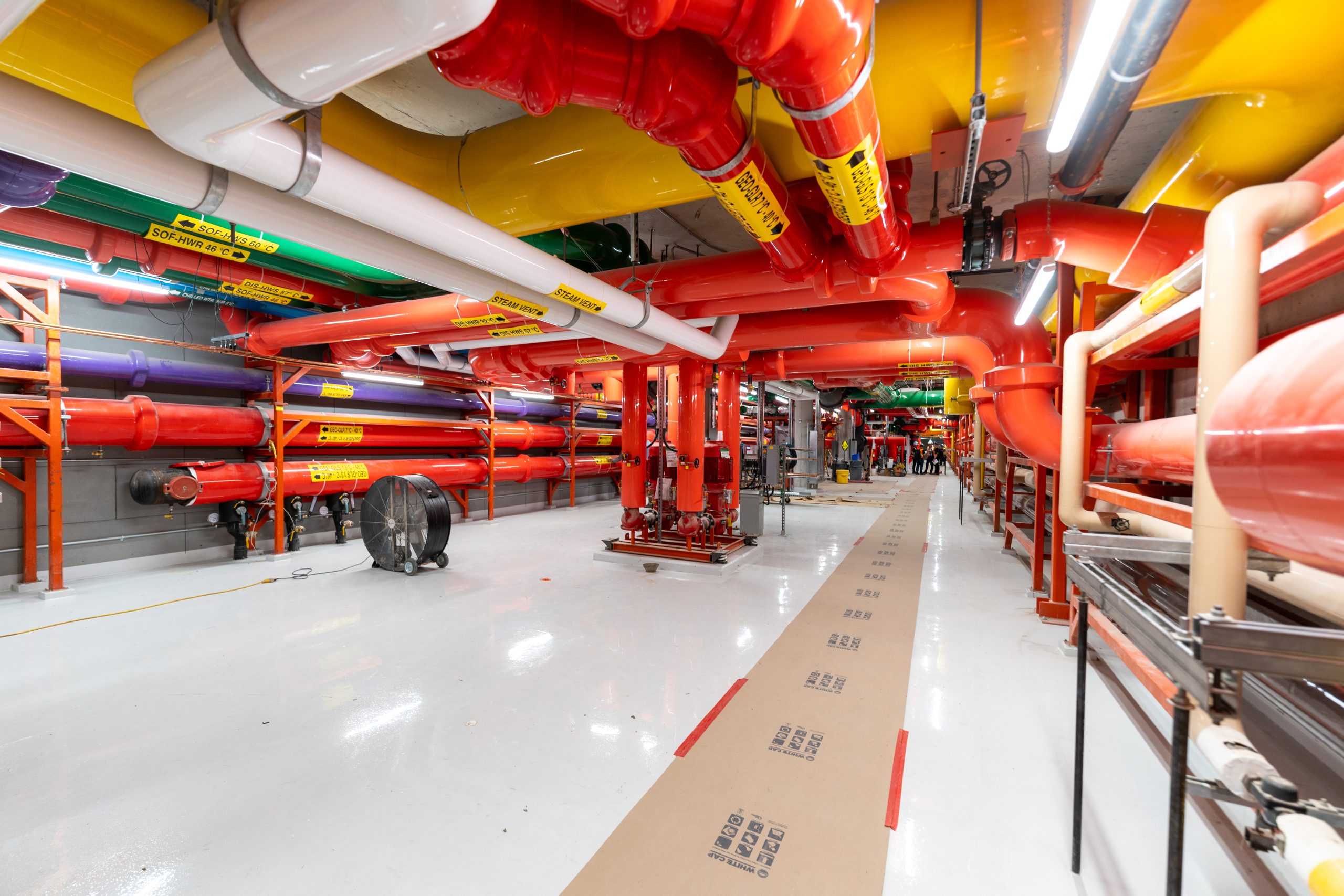Spotted on Front Campus: Under construction and on our way to climate positive
Stroll around King’s College Circle this summer and you’ll find more than just flowers in bloom — construction crews are hard at work connecting key buildings to Canada’s largest urban geoexchange system.

The University of Toronto’s St. George Campus is always buzzing: new graduates posing for photos, alumni reconnecting and current students strolling the walkways. But if you’ve passed by King’s College Circle recently, you might have noticed something a bit different.
Behind the construction fencing lining the Medical Sciences Building, crews are hard at work connecting campus buildings to Canada’s largest urban geoexchange system — a thermal battery buried deep beneath Front Campus that is transforming how the university heats and cools its buildings.
It’s the latest phase of Project Leap, the university’s ambitious plan to reduce greenhouse gas (GHG) emissions by over 50 per cent by the end of 2027.
“The geoexchange was built as part of the Landmark Project, but through Project Leap we are expanding its reach, adding new connections and heat pumps that will dramatically increase its capacity,” says Scott Hendershot, senior manager with the Sustainability Office. “This will unlock its full storage capacity, equivalent to the energy from 250,000 electric vehicle batteries.”

Based in part on pioneering work from Professor Emeritus Frank Hooper, of mechanical and industrial engineering, the geoexchange consists of 372 U-shaped pipes, each reaching a depth of 250 metres, about half the height of the CN Tower.
Connected to U of T’s heating and cooling network, the system captures excess heat from campus buildings during the summer and stores it beneath Front Campus. Come winter, that heat is returned to warm the buildings, reducing reliance on fossil fuels.

Current construction will connect the Medical Sciences Building, FitzGerald Building, Leslie L. Dan Pharmacy Building and Terrence Donnelly Centre for Cellular and Biomolecular Research to the geoexchange. Once complete, a total of 33 campus buildings will benefit from the expanded geoexchange system. This, including building heat recovery and heat pumps in Landmark and the Central Steam Plant, is expected to reduce the campus’s reliance on natural gas by over 25 per cent, equivalent to a GHG emissions reduction of 17,000 tonnes — a major step toward meeting U of T’s climate goals.
“This is a wonderful demonstration of how sustainable technologies can be integrated into a historic campus,” says Ron Saporta, chief operating officer, property services & sustainability. “Alongside work to switch from natural gas to electric heating systems and upgrade lighting in 38 buildings, we are on track to become a climate positive campus before 2050.”
Construction on Front Campus is due to complete this fall, with the geoexchange system coming online the following spring.
Want to learn more? Visit the Project Leap webpages.
